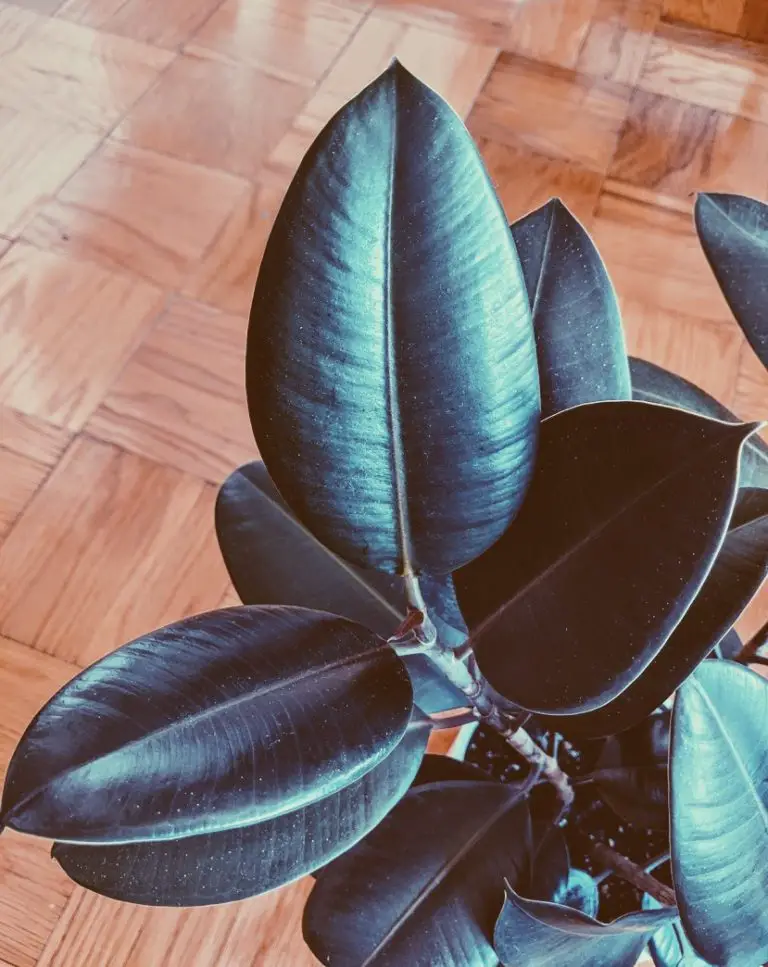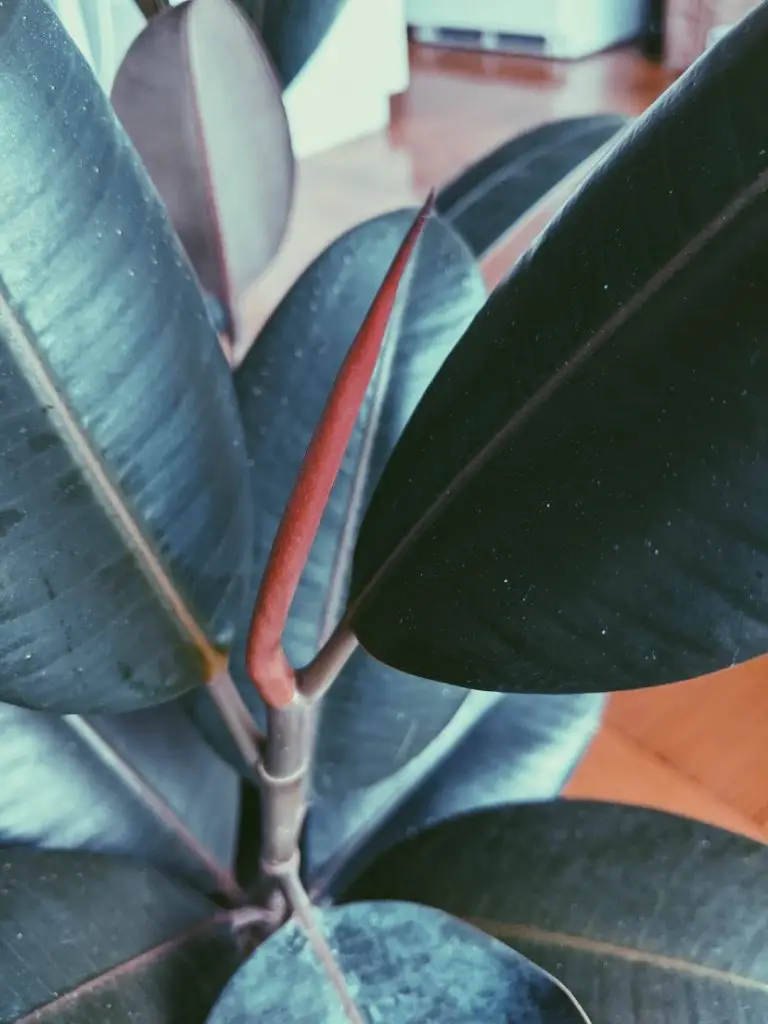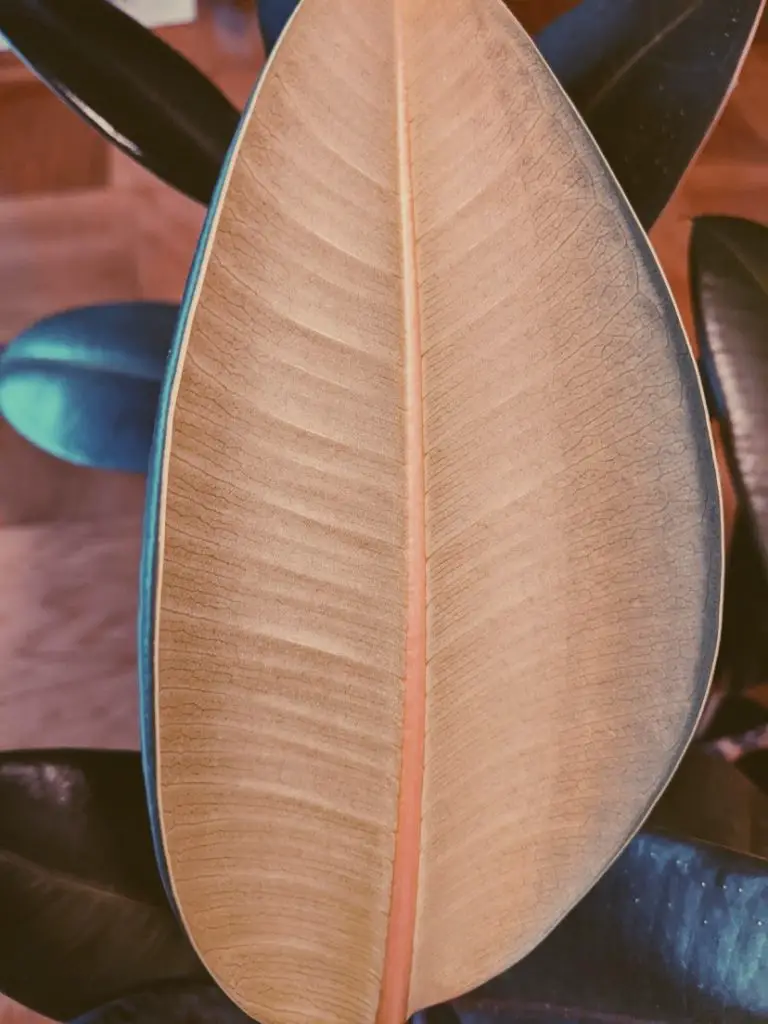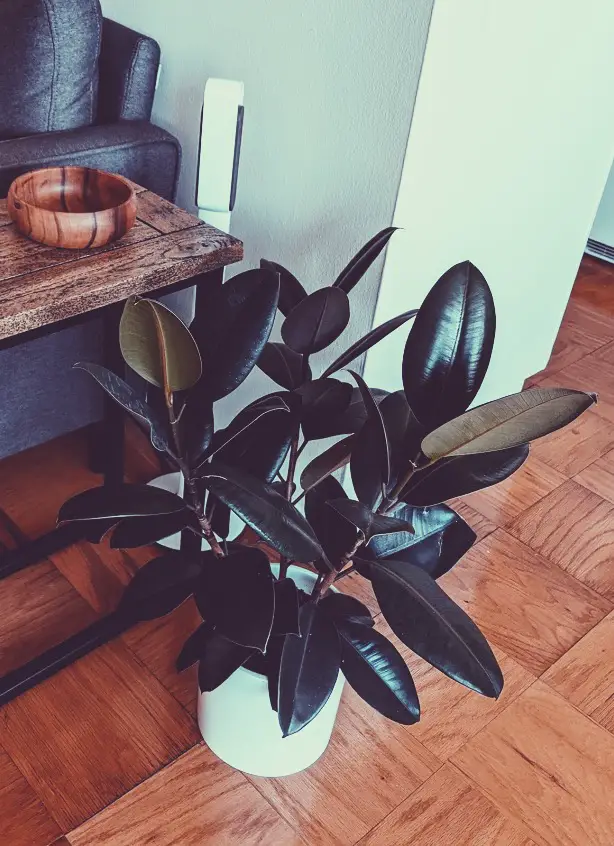
Burgundy Rubber Tree
Botanical Name: Ficus Elastica ‘Burgundy’
Common Name: Burgundy Rubber Tree, Rubber Plant, Burgundy Rubber Fig
Family: Moraceae
About Burgundy Rubber Tree
The burgundy rubber tree is a cultivar of Ficus Elastica, it is most known for its large, glossy, burgundy leaves that can grow upwards of ten inches in length and five inches in width. When planted outdoors these trees can reach heights of over 100 feet, indoors they usually top out at around 6 to 8 feet.
This striking cultivar is native to vast parts of Southeast Asia including India and Malaysia. The Burgundy Rubber Tree can also be found all over the West Indies where it was introduced by humans. It grows very well in the tropical climates of the West Indies which has driven the species to become invasive in some areas.

Light
Your Burgundy Rubber Tree will do and look its best in bright indirect light. The best spot is right in front of a window covered by a sheer curtain. Alternatively, you can place your plant in an uncovered north-facing window. It is important to give this genus plenty of light to keep its striking foliage large and vibrant in color. If your Rubber Tree isn’t receiving enough light it will be quickly noticeable; lower leaves may begin to fall, new leaves will have a lighter hue and may even revert to green shades, also the distance between nodes will increase causing a leggy appearance.
Water
A light hand is required when watering your Ficus Elastica, as they are finicky when it comes to too much moisture in their soil. I recommend holding off watering your burgundy rubber tree until the soil is completely dry.
You can quickly tell if your plant needs water as their leaves become droopy and will appear much less perky than usual. If your leaves become more limp than usual and begin to point downward it is a telltale sign it is time for watering.
In contrast, if your plants’ leaves become yellow and are beginning to drop it is a sign of overwatering, if you notice yellow leaves and the plants’ soil is still moist try do dry it out as soon as possible and hold off watering until the soil is completely dried through.

Humidity & Temperature
As they are native to tropical climates these plants enjoy high humidity if possible. What is interesting is they also don’t seem to display negative signs when kept in average indoor humidity (around 35%-55%).
If you notice the leaf tips of your Rubber Tree are beginning to brown or the leaves are curling it is a sign that the plant needs more humidity. Grouping plants together or adding a pebble tray with water under your plant pot can be easy ways to increase the relative humidity and keep your Ficus Elastica happy.
The best temperature range to keep your Rubber Plant happy is between 65 and 80 degrees Fahrenheit meaning your average indoor temperature should be just fine. If you plan on taking your Rubber Tree outdoors when the weather allows just make sure to bring it indoors before temperatures drop below 45 to 50 degrees Fahrenheit as this is when the plant will begin to drop leaves and go dormant.
Toxicity
Ficus Elastica is toxic to both cats and dogs. If ingested and serious symptoms such as irritation around the mouth and vomiting occur contact your local veterinarian office as soon as possible.
The plant and especially its sap is also mildly toxic to humans. Beware of the thick white sap when pruning your Burgundy Rubber Tree as it can cause serious skin irritation. If you come in contact with the plants’ sap wash the affected area with soap and water immediately.

Tips
Once your burgundy rubber tree has reached its desired height you can cut off the top of the plant, this will trigger it to branch out horizontally. From there you can prune accordingly to get the desired appearance depending on if you want a more bushy or tall tree.
The more light your Burgundy Fig gets the deeper and more vibrant the burgundy leaves will be. I recommend placing your tree in the brightest indirect light you can provide. On top of stimulating beautiful foliage higher light conditions also prompt Ficus Elastic to grow vigorously, helping prevent possible pest or over watering problems.